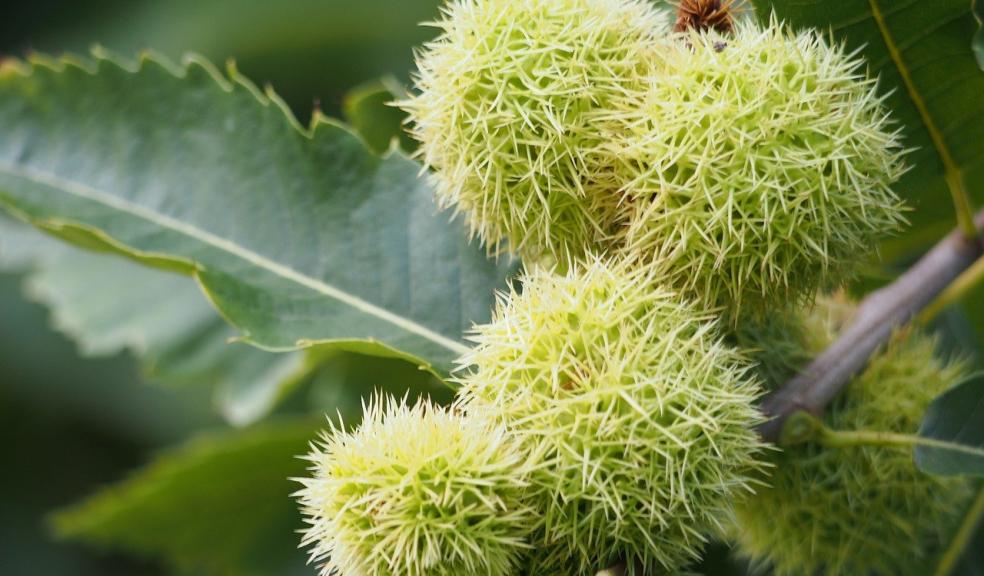
Royal Horticultural Society calls on public to help map sweet chestnut trees
The Royal Horticultural Society (RHS) and Coventry University are calling on the public to spot sweet chestnuts on their daily stroll as they launch a new citizen science project to help protect the at-risk tree for the future.
Found in woods and parks throughout the UK, the iconic sweet chestnut (Castanea sativa) with its attractive, deeply-grooved bark, distinctively jagged-edged leaves and clusters of edible nuts is an important source of food for wildlife – including bees, pollinators and squirrels - and can live for up to 700 years when healthy. Thought to have been introduced by the Romans, the trees are now under threat from newly arrived oriental chestnut gall wasp (Dryocosmus kuriphilus) which disfigure and weaken the tree, with the RHS Science team eager to map the non-native insect and trees in varying states of health.
Most sweet chestnut trees can be found in the south of England, particularly in Kent and Surrey, but have been found to reach farther north than the Cairngorms. Beyond this very little is known about their distribution in the UK, making it difficult to fully understand the threat to UK gardens and green spaces and provide effective protection.
First discovered in the UK in 2015, the oriental chestnut gall wasp spreads through flight and likely entered the UK through plant imports. The wasp larvae cause abnormal growths, known as galls, on the buds and leaves of the sweet chestnut tree. In high numbers these galls can weaken the host tree, making it more vulnerable to other pests and diseases, particularly sweet chestnut blight.
To take part in the Check-a-Sweet Chestnut Survey, members of the public can register on the RHS website and log their findings online via the TreeZilla and TreeAlert reporting tools. Training materials will be provided to help identify and measure sweet chestnut trees and to recognise signs of poor health such as galls on leaves and twigs, damaged or discoloured bark or dieback in the canopy. People are also encouraged to seek out sweet chestnut trees which have already been mapped and to check up on their health.
RHS Plant Pathologist Jassy Drakulic says: “Organisms that arrive from abroad and attack trees are on the rise, with an average of six new species arriving in Europe each year. Citizens as a collective can gather huge amounts of data that would never be possible with official inspections and surveys.
“We hope that by finding and measuring sweet chestnut trees this will breathe new life into the trails many people will have often walked in lockdown, and that the project will inspire people to appreciate and learn more about the trees in their area.”
Data gathered during the project will help the Forestry Commission monitor pests and diseases. The project, funded by Project HOMED, is an opportunity to demonstrate the value of citizen science in containing such outbreaks and minimising damage to sweet chestnut populations in the UK.
RHS Science will move to a new state of the art facility, RHS Hilltop, at RHS Garden Wisley in June 2021 that will help facilitate its research programmes and educational work. For more information visit www.rhs.org.uk/hilltop.











